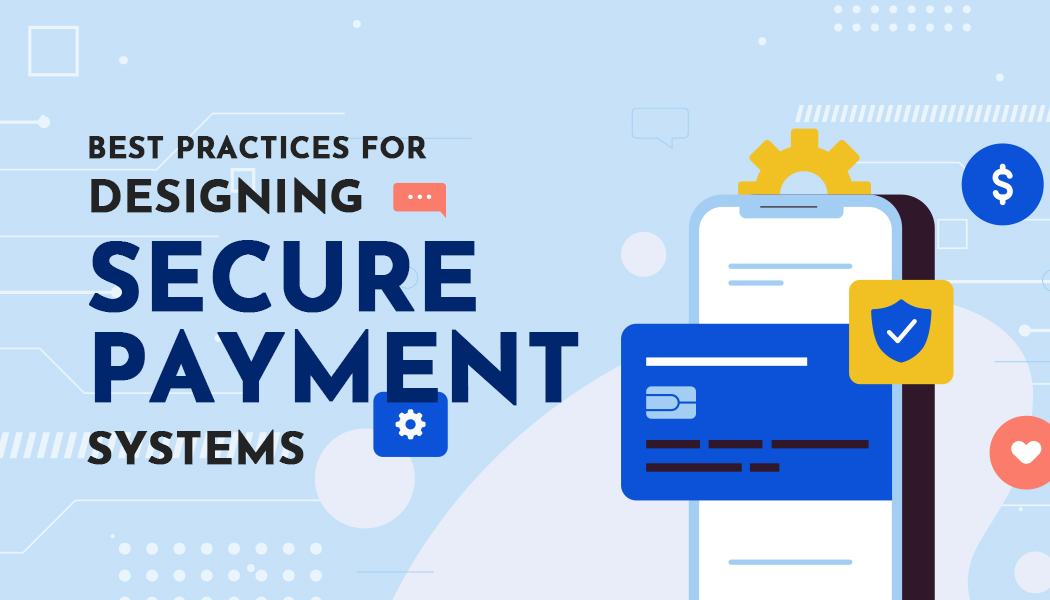Best Practices for Designing Secure Payment Systems
In today’s digital world, securing payment systems is vital for both businesses and consumers. As online transactions become more common, ensuring these systems are safe is a top priority. This article explores the best practices for designing secure payment systems to protect sensitive data and maintain customer trust.
Understanding Payment Security
Payment security means protecting sensitive information during transactions to prevent unauthorized access and fraud. This includes safeguarding credit card details, personal information, and transaction data from potential threats.
Implement Strong Authentication Mechanisms
Strong authentication is the foundation of secure payment systems. Use multi-factor authentication (MFA), which requires two or more verification methods, such as passwords, smartphone apps, or biometric data like fingerprints or facial recognition.
Use End-to-End Encryption
End-to-end encryption (E2EE) ensures data is encrypted from the sender’s end and only decrypted at the recipient’s end. Therefore, even when data is captured during its transfer, it stays encrypted and indecipherable to those not authorized. Implementing E2EE for payment transactions helps protect sensitive information from being accessed or altered.
Adhere to PCI-DSS Compliance
The Payment Card Industry Data Security Standard (PCI-DSS) provides security standards to ensure companies that handle credit card information maintain a secure environment. Adhering to PCI-DSS compliance is crucial for protecting cardholder data. Regularly update your systems to meet the latest PCI-DSS requirements and conduct frequent security assessments to identify and address vulnerabilities.
Tokenization of Payment Data
Tokenization replaces sensitive payment information with a unique identifier (token) that cannot be used outside the specific context for which it was created. This reduces the risk of data breaches because even if the token is intercepted, it cannot be used to access the actual payment information. Tokenization effectively protects credit card numbers and other sensitive data.
Secure Payment Processing API Integration
When integrating a payment processing API, ensure it comes from a reputable provider with strong security measures. The API should support secure communication protocols like TLS (Transport Layer Security) to encrypt data during transmission. Additionally, implement access controls to limit who can interact with the API and monitor its usage for any suspicious activity.
Regular Security Audits and Penetration Testing
Regular security audits and penetration testing are essential for identifying and addressing potential vulnerabilities in your payment system. Security audits involve a thorough review of your system’s security measures, while penetration testing simulates cyber-attacks to test your defenses. These practices help you stay ahead of potential threats and ensure your payment system remains secure.
Implement Secure Coding Practices
Secure coding practices are critical for preventing security vulnerabilities in your payment system’s software. This includes validating and sanitizing input to prevent SQL injection attacks, using prepared statements, and avoiding hard-coding sensitive information like API keys and passwords. Regular code reviews and automated security testing tools can help identify and fix potential issues early in the development process.
Monitor and Respond to Security Incidents
Even with robust security measures, it’s important to have a plan for monitoring and responding to security incidents. Implement a security information and event management system to monitor for suspicious activity in real-time. Establish a response plan that includes steps for containing and mitigating the impact of security breaches, as well as notifying affected parties and regulatory authorities as required.
Educate Employees and Customers
Human error is a significant factor in many security breaches. Educate your employees about the importance of payment security and provide regular training on best practices, such as recognizing phishing attempts and properly handling sensitive data. Similarly, educate your customers on how to protect their information during online transactions, such as by using secure passwords and recognizing secure websites.
Stay Updated on Security Trends and Threats
Stay informed about the latest security trends and threats by following industry news, participating in cybersecurity forums, and attending relevant conferences. Keeping up-to-date with the latest developments allows you to adapt your security measures and ensure your payment system remains protected against new and emerging threats.
Conclusion
Designing secure payment systems is an ongoing process that requires a comprehensive approach and constant vigilance. By implementing strong authentication mechanisms, using end-to-end encryption, adhering to PCI-DSS compliance, and following the other best practices outlined in this article, you can significantly enhance the security of your payment systems. This not only protects sensitive data but also builds trust with your customers, fostering a secure and reliable payment environment.




